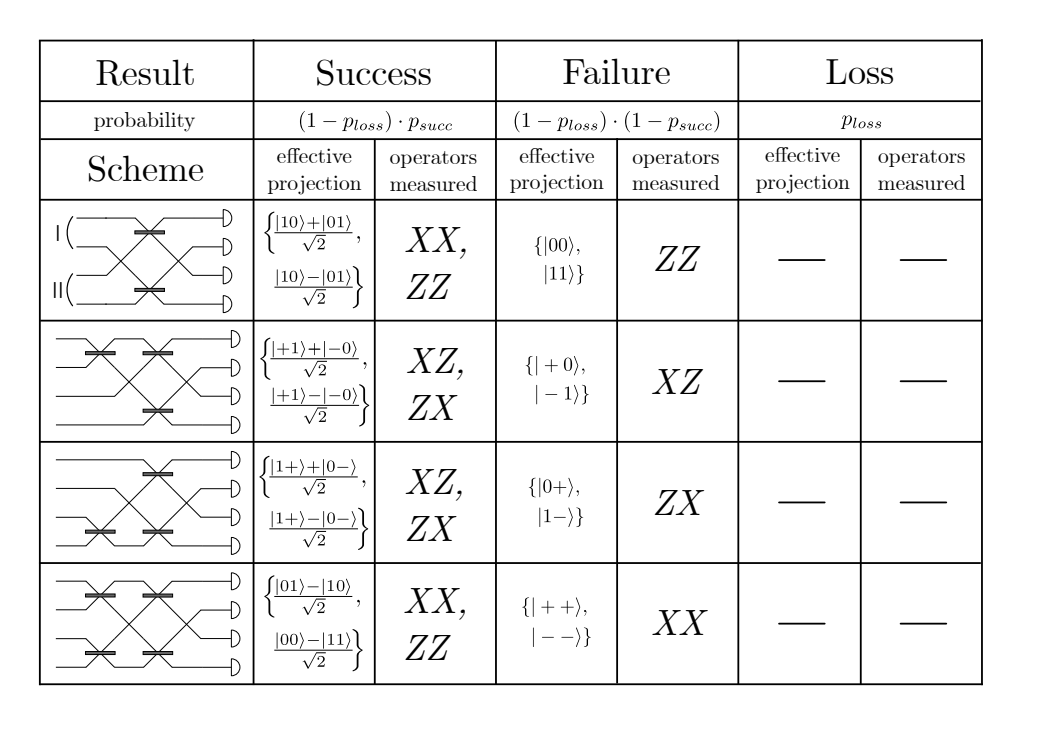The role of Bell state measurements (BSM) in quantum computing, particularly in fusion-based quantum computing (FBQC), is explored in this study. The research investigates the impact of losses on fusion operations and the trade-offs in quantum computing circuits. It also examines the use of dual-rail encoding in quantum computing. The study concludes that fault-tolerant quantum computing in the FBQC model is achievable with current levels of optical losses, provided single photons of the resource states can be created and detected with a total marginal efficiency higher than 0.973.
What is the Role of Bell State Measurements in Quantum Computing?
Bell state measurements (BSM) are operations of paramount importance in many linear-optical quantum protocols. They find applications in quantum communication, including quantum teleportation and entanglement swapping, and in quantum computing. They also act as a central part of fusion-based quantum computing (FBQC), a recently proposed architecture for fault-tolerant quantum computing.
Non-classical properties of single photons interfering in linear-optical elements lay the foundation of a linear optical platform, which is considered as a perspective candidate for the implementation of a quantum computer. However, optical losses put serious constraints on practical schemes since they cannot be completely eliminated. Moreover, deterministic entangling operations with photonic qubits in dual-rail encoding are prohibited in a linear optical system, and the probabilistic nature of computation generally results in a large resource and technical overhead. These problems can be solved by error correction procedures available in computation models different from the standard circuit model, providing the path to scaling up optical quantum computing.
In the FBQC model, quantum algorithms are decomposed into a sequence of two repeated fundamental operations: Generation of constant-sized entangled states called resource states, and projective entangling measurements called fusions, such as Bell state measurements. The quality and success probabilities of both these operations are extremely important for the successful realization of FBQC.
How Do Losses Affect Fusion Operations in Quantum Computing?
In this work, the effect of losses on the fusion operations is studied and the limits required to achieve large-scale fault-tolerant computations are estimated. It is known that the success probability of a BSM in the dual-rail encoding cannot exceed 50% using linear-optical elements, arbitrarily many ancillary vacuum modes, and photon number resolving detectors (PNRDs). However, the success probability can be elevated at the cost of extra photons in more sophisticated linear-optical schemes.
Using ideas from previous research, linear-optical BSM circuits yielding higher success probabilities with different additional resources are investigated. The requirements on the performance of linear-optical constituents of various BSM circuits used as fusions in the FBQC model are numerically estimated. Specifically, two notable fusion networks introduced in the seminal work are examined, as well as some modification of these networks, and threshold values for losses from different sources in the BSM circuits under which errors caused by these losses are tolerated.
What is the Trade-off in Quantum Computing Circuits?
The performance of the circuits with different additional resources is compared and a trade-off is found between the improvement from the success probability boosting with additional photons and levels of losses imposed by additional linear-optical components in the more complicated BSM circuits. The paper is organized into sections detailing the preliminaries of the work, providing a detailed explanation of the properties of linear-optical realization of Bell state measurements and some possible explicit schemes of BSM circuits with different additional resources.
How is Dual-Rail Encoding Used in Quantum Computing?
Throughout this work, a dual-rail encoding of photonic qubits is considered, which is the most convenient and common encoding in optical quantum computing. A logical qubit here is represented by a photon occupying either of two modes. This is essentially equivalent to the common polarization qubit encoding where the two modes are the internal polarization degrees of freedom of the photon and these two representations can be deterministically converted into each other.
What are the Results and Conclusion of the Study?
The results of numerical simulations of the lossy BSM circuits within the FBQC framework are shown, including threshold hardware requirements for the components of linear-optical circuits for fault-tolerant quantum computation. The results show that fault-tolerant quantum computing in the FBQC model is possible with currently achievable levels of optical losses in an integrated photonic implementation, provided that we can create and detect single photons of the resource states with a total marginal efficiency higher than 0.973. The conclusion gives an overview of the results and the implications for the field of quantum computing.
Publication details: “Analysis of optical loss thresholds in the fusion-based quantum
computing architecture”
Publication Date: 2024-03-21
Authors: Aleksandr Melkozerov, A. S. Avanesov, I. V. Dyakonov, S. S. Straupe, et al.
Source: arXiv (Cornell University)
DOI: https://doi.org/10.48550/arxiv.2403.14811

